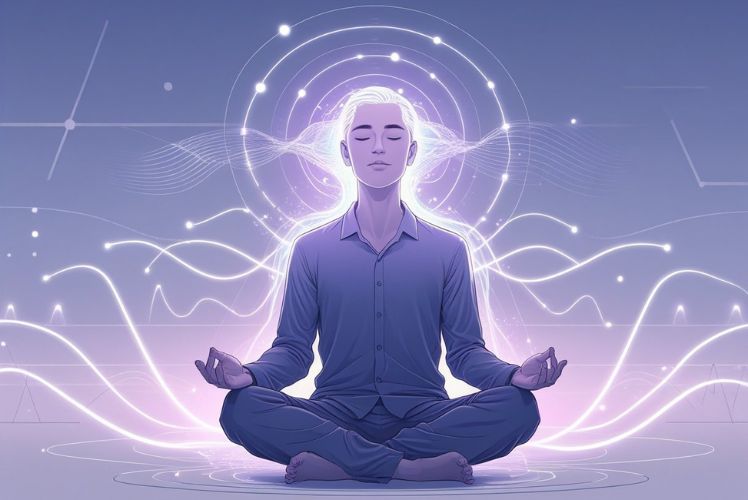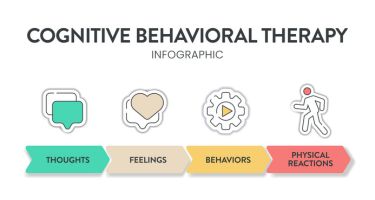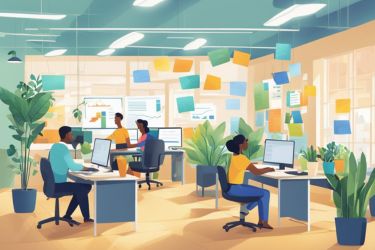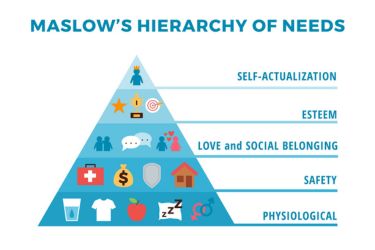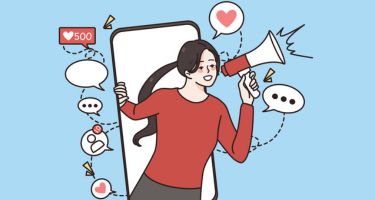The Silva Method, also called “Silva Mind Control,” is a self-help approach that uses meditation and specific mental techniques to help us reach our full potential. It teaches us simple ways to relax, focus our minds, and make positive changes in our thinking and lives. By tapping into these skills, many people have found it easier to manage stress and feel more in control of their thoughts and emotions.

The method was started by José Silva in the 1960s and has since been used by people all over the world. It claims to work by helping us access deeper levels of our mind, allowing us to improve our performance at work, school, and in personal relationships. If you are curious about how relaxation and mental training can have a real impact on daily life, you may find the basic ideas behind the Silva Method worth learning more about.
Key Takeaways
- The Silva Method uses guided meditation and mental exercises.
- It offers practical benefits for stress and self-improvement.
- Its ideas have influenced many personal growth programmes.
Foundations of the Silva Method

The Silva Method builds on structured mental exercises designed to help us use relaxation and visualisation to reach our goals. Its techniques have roots in the study of human potential and are centred on the insights and research of Dr. Jose Silva.
Origins and Development
The Silva Method began in the 1940s when Jose Silva, an electronics repairman in Texas, started experimenting with ways to enhance learning and intelligence. He originally worked with his own children, testing techniques that involved relaxation and concentration. These early experiments helped form the basis of the programme.
By 1966, Silva introduced the system to the public, calling it the Silva Mind Control Method. The method gained popularity worldwide, spreading to more than 100 countries. People of all ages took part in seminars and at-home courses. Over time, the Silva Method’s approach became known as psychorientology, focusing on how we can re-orient our minds for better outcomes.
Principles of Mind Control
At its core, the Silva Method teaches us that the mind can be trained much like a muscle. The process relies on guided meditation and visualisation to help us reach lower brainwave frequencies—known as alpha and theta states. These states are linked with greater creativity, relaxation, and problem-solving abilities.
Some of the main principles include:
- Deep relaxation: Using systematic exercises to relax both body and mind.
- Creative visualisation: Imagining goals or solutions in vivid detail.
- Positive affirmations: Repeating encouraging statements to shift beliefs.
- Mental rehearsal: Practising actions or responses mentally before taking real action.
By combining these techniques, we can potentially manage stress and improve concentration. Supporters claim it can also boost learning and self-confidence, though there is debate about scientific evidence for some claims. More detail is available on the main Silva Mind Control Method website.
The Role of Dr. Jose Silva
Dr. Jose Silva played a central role in creating and popularising the Silva Method. With a deep interest in psychology and the mind’s potential, he researched environments that allowed for greater mental performance. Silva believed everyone could develop their intuition and problem-solving ability through mental training.
He was not a medical doctor but became widely known as a specialist in self-help and meditation. Through public talks and workshops, he taught the techniques of the Silva Mind Control Method to a broad audience. Silva emphasised practical results, encouraging us to use daily exercises to see improvement in decision-making and creativity.
His vision led to a global movement, with millions trying his methods and some adapting them for personal growth or stress relief. Silva’s legacy is closely tied to the idea that, with training, anyone can use their mind more effectively. To learn more about his life and the programme he developed, we can visit the Silva Method Wikipedia page.
Understanding the Science Behind Mind Control

The Silva Method uses specific mind techniques based on how our brains work. These techniques focus on different brain wave states, including the alpha and beta levels, to help us gain better focus and control.
Brain Waves and Electrical Activity
Our brains create electrical activity, which we can measure as brain waves. There are several types of brain waves, including delta, theta, alpha, beta, and gamma. Each type has a different frequency, measured in hertz (Hz).
Brain waves change depending on what we are doing. For example:
- Alpha waves (8-13 Hz): Often found when we are relaxed but awake.
- Beta waves (13-30 Hz): Seen when we are alert and active.
The Silva Method mind control techniques are built on research into how these patterns help us change our focus, relax, and solve problems. Modern studies have reviewed how these brain wave changes influence mental, emotional, and physical well-being, supporting the method's effectiveness at helping us manage stress and improve concentration. We can learn more about this on the science of the Silva Method.
Alpha Level and Alpha State
The alpha level, also known as the alpha state, happens when our brain mostly produces alpha waves. This state is usually reached when we are calm, aware, and focused, such as during light meditation or right before we fall asleep.
At the alpha level, the brain is more open to creative thoughts, problem-solving, and memory retention. With practice, we can enter the alpha state through structured exercises, helping us reduce anxiety and manage stress. This is a core part of the Silva Method, which teaches us how to control our brain wave frequency for better mental performance and self-awareness. Many people use this state for visualisation, relaxation, and even self-healing.
Beta Gear and Higher Gear
Beta gear refers to the brain working at the beta frequency range, usually when solving problems, making decisions, or dealing with daily challenges. In this state, we are alert, logical, and our brains are processing information quickly.
Operating in beta gear can be helpful in school, work, and other demanding situations, but being stuck at this level for too long often leads to stress and feeling overwhelmed. The Silva Method addresses this by teaching us how to shift between these gears, allowing conscious control over our mental state. Mastering when to use beta gear versus the relaxed alpha state helps us achieve better balance, emotional control, and improved performance, as discussed in studies on the Silva Method’s mental control techniques.
Core Techniques of the Silva Method

The Silva Method teaches us specific practices for sharpening our mind and boosting our problem-solving skills. These methods use practical steps like relaxation, visualisation, and mental rehearsal to help us access calmer states of mind and tackle goals with focus.
Dynamic Meditation
Dynamic meditation is about guiding our minds into a relaxed state called the alpha level. At this stage, we become more open to positive change and creative ideas. We usually achieve this by sitting or lying down, closing our eyes, and taking slow, deep breaths.
Next, we use visualisation or repeat calming words to shift our brainwaves from the usual busy state to a slower, more peaceful rhythm. This state allows us to solve problems and rehearse solutions. Using dynamic meditation helps manage stress and improve wellbeing, while also making it easier for us to programme our minds for better habits.
Some of us set clear intentions while meditating, such as handling anxiety or focusing better at work. By practising regularly, we can train our minds to reach this effective state more quickly and use it in our daily lives. Dynamic meditation is a key skill in the Silva Method that unlocks many other techniques.
Mirror of the Mind Technique
The Mirror of the Mind Technique is a mental tool for problem-solving and achieving long-term goals. We start by relaxing deeply, often using dynamic meditation first. Then, we imagine a large, blank mirror in our mind.
On this mirror, we "project" a clear mental image of the problem or challenge we face. We take time to notice all the details—how it looks, sounds, and feels. After a moment, we mentally erase this image and replace it with a new one, showing the problem already solved. For example, if we want to improve our health, we first see any health struggles on the mirror, then replace them with a scene of ourselves healthy and active.
This process gives our minds a clear picture of what we want, focusing our thoughts on positive solutions. The Mirror of the Mind Technique works best when repeated over time, allowing our subconscious mind to guide us towards these solutions.
Creative Visualisation and Visualisation Techniques
Creative visualisation is central to the Silva Method. We use it to mentally rehearse the outcomes we want. While in a relaxed, meditative state, we create vivid mental images of our goals as if they have already been accomplished.
We engage multiple senses during visualisation. For instance, if our aim is to excel in a school project, we visualise the finished work, the sounds of praise, and even how success feels. These visualisation techniques strengthen self-belief and motivate action.
A helpful list for effective visualisation:
- Be specific with images and details.
- Repeat the visualisation daily.
- Use positive emotions.
By practising this way, we build mental habits that carry into real-life situations.
Three Fingers Technique
The Three Fingers Technique helps us quickly enter a focused, calm state using just our hand. We train ourselves by taking three deep breaths, then touching the tips of our thumb, index, and middle fingers together. While in a relaxed state, we tell ourselves that doing this in the future will bring back our calm focus.
Over time, our brain links this finger gesture to the mental state achieved during meditation. This tool is especially useful for dealing with stress, recalling information, or preparing for public speaking. If we feel anxious before an exam or meeting, using the Three Fingers Technique brings us back to a calm, resourceful state.
The more we practise, the easier it becomes to use. This method is practical and can be used anywhere without drawing attention, making it a favourite among Silva Method practitioners.
Applications and Benefits in Everyday Life

We can use the Silva Method to create positive changes in our daily lives. Through practical exercises, we gain ways to manage stress, find creative solutions, boost healing, and control discomfort.
Relaxation and Stress Management
Many of us struggle with tension and anxiety during the day. The Silva Method uses guided visualisation and breathing techniques to help us reach deep relaxation. These simple steps calm our bodies and minds, lowering stress levels and promoting inner peace.
Practising meditation for a few minutes can improve our mood and help us approach problems with a clear mind. By practising consistently, we develop a natural response to stress, making it easier to stay calm under pressure.
A relaxed state also improves our sleep quality, giving us more energy and helping us feel refreshed. This sense of tranquillity supports healthier thinking and decision making. According to the Silva Method, both our mental and physical health can improve with regular relaxation practice.
Problem-Solving and Solutions to Problems
Solving problems is an important part of life. The Silva Method guides us to enter a relaxed mental state, allowing us to access our deeper thinking abilities. This quieted mind helps us see new options that we might miss when feeling rushed or stressed.
We use techniques such as mental rehearsal and focused intention to find answers. By imagining the ideal outcome, we can reduce negative thinking and open ourselves to creative solutions. This method encourages us to trust our intuition and use both logic and imagination.
For example, we can practise visualising a successful result before taking action. This approach helps us stay positive and focused. Many people have found these tools useful for tackling challenges at work, school, or in personal life. As noted by those using the Silva Method for mind acceleration, the process can improve our confidence in solving problems.
Boosting Creativity and Imagination
Unlocking creativity often requires us to clear our minds of worries and doubts. The Silva Method supports this by teaching us to relax deeply and tap into our imagination. Through visualisation exercises, we picture new ideas and explore different possibilities.
We might use brainstorming or mental imagery to generate creative solutions. Even short daily visualisations can help us find inspiration and put ideas together in new ways. This supports activities like writing, art, and creative problem solving.
Techniques for increasing creativity are not limited to artists. Everyone can benefit—from students working on projects to adults making plans. Improved imagination also helps us build positive thinking habits, which can raise our motivation and wellbeing. The Silva Ultramind technique is often used for this purpose, as it encourages us to learn faster, unlock creativity, and use our intuition.
Healing and Pain Control
Pain, whether physical or emotional, affects our ability to live well. The Silva Method offers strategies for pain control and healing by teaching us to calm our bodies and minds. We practise gentle self-hypnosis, positive visualisation, and focused thinking to change our response to discomfort.
Regular relaxation can reduce anxiety around pain and support physical recovery. We use guided imagery to see ourselves healing, which often leads to real improvements. These mental exercises are used alongside, not instead of, regular medical care.
Through steady practice, we may experience fewer aches and faster healing from minor injuries. Stress reduction also helps the body function better and can lower inflammation. Studies and users of the Silva Mind Control Method report less stress, better pain management, and more energy for daily life.
Development of Human Potential
By using the Silva Method, we can train our minds to improve how we learn, remember, and understand information. This approach also helps us trust our intuition and build confidence as we develop personally.
Enhancing Learning and Memory
The Silva Method teaches us practical exercises for better learning and memory retention. One important tool is the use of memory pegs, which lets us link new information to mental images or associations. This makes it easier to remember facts and ideas.
Dynamic meditation techniques help us reach a relaxed but alert state. In this state, it becomes simpler to absorb information and recall it later. These skills are helpful for students and anyone wishing to learn quicker or remember more.
Many people report that these techniques helped them in academic and professional environments. The focus on using both sides of the brain aims to unlock more mental capacity, similar to how geniuses are said to access more of their mental potential. In this way, we can work towards improving our performance in school, work, and daily life.
Intuition and ESP
The Silva Method encourages us to trust our intuition and develop what it calls “extra-sensory perception” (ESP). This does not mean supernatural abilities but rather noticing subtle clues and patterns that we might otherwise miss.
With guided visualisation and meditation exercises, we practise recognising gut feelings and small signals. By doing this, we can make better decisions and solve problems more creatively.
The method teaches that everyone has some level of intuitive ability. With practice, our intuition can become a reliable guide in everyday life, whether we are choosing between options or sensing the best course of action at work. Some believe this may explain why high performers sometimes seem to know what solution will work best before the data proves it.
Building Self-Esteem and Inspiration
Boosting self-esteem and inspiration is another goal of the Silva Method. Regular mental exercises help us build a more positive self-image. Affirmations and visualisations are used to reinforce our strengths and set realistic goals.
By focusing on our abilities instead of our weaknesses, we feel more confident about handling challenges. Meditation activities improve our ability to stay calm in stressful situations, further supporting mental resilience.
We are encouraged to look at successes, both big and small, which sparks motivation to keep learning and growing. This supportive outlook helps us become better at adapting to new situations and inspires us to reach for higher goals. For more detailed information about the Silva Method’s approach, see this Silva Method meditation resource.
Influence and Legacy of the Silva Method
The Silva Method has impacted various fields, from self-help to holistic health. Its use of mental techniques, meditation, and visualisation has drawn attention from authors, health professionals, and everyday people seeking to tap the mind’s potential.
Silva Method Mastery Course and Basic Lecture Series
The Silva Method Mastery Course and the Basic Lecture Series are two main ways people learn Silva techniques. The Basic Lecture Series was the original programme. It guides us through essential practices, such as deep relaxation (known as the "long relax"), visualisation, and effective sensory projection, which help us develop focus and mindfulness.
Over time, new courses like the Mastery Course have adapted the material for current learners' needs. These courses introduce advanced skills, including manifestation and subjective communication, which aim to help us set and achieve personal or professional goals. The courses are designed for both beginners and those who want to go deeper.
Many participants have used these lessons to manage issues like insomnia or stress. The structure is practical, often including exercises, guided meditations, and interactive components. This design makes it easier for us to fit the method into our daily routines.
Notable Figures and Success Stories
Several well-known figures have spoken about or used the Silva Method. Richard Bach, author of Jonathan Livingston Seagull, described how the programme helped him with creativity and life challenges. Shakti Gawain, known for her work on creative visualisation, has credited some of her ideas to what she learned from Silva training.
In the field of health, O. Carl Simonton, a doctor who worked with cancer patients, used relaxation and mental imagery techniques similar to those taught in the Silva Method for patient care. His work on mind-body health has inspired many therapists and patients to explore mental techniques for healing.
These stories, along with testimonials from thousands of students, show the broad appeal of the method. People report improvements in focus, sleep, creativity, and stress management.
Adapting the Silva Method for Modern Needs
The Silva Method continues to adapt, now including digital formats and new topics to stay relevant. Today, we can access online courses, apps, and guided audio lessons. These resources make the method more accessible across different lifestyles.
Issues like insomnia, anxiety, and the need for work-life balance have shaped the evolution of programmes. Techniques such as long relax and manifestation are taught as practical tools for both adults and young people. Some schools and businesses have begun introducing these practices to improve creativity and focus, as discussed on this page about the neuroscience behind the Silva Method.
Modern adaptions still focus on core goals: helping us use our minds more effectively for simple, positive changes in daily life. The method’s flexibility is a key reason it remains well-regarded today.
Frequently Asked Questions
We explore practical aspects of Silva Method exercises, differences from other meditation styles, proven benefits, guidance for self-learners, and the method’s approach to influencing brainwave states.
What are the core techniques of the Silva Method?
The core techniques of the Silva Method include guided visualisation, deep relaxation, and mental imagery. The practice also uses countdowns (like 3-2-1) to help us enter deeper levels of consciousness.
Many exercises ask us to visualise successful outcomes or solutions to problems with calm focus. This process helps us train our minds to use positive thinking and intention in structured ways.
How can the Silva Method exercises improve mental clarity and focus?
Practising the Silva Method involves slowing our breathing and quieting our thoughts. Exercises often instruct us to mentally count down or use particular affirmations.
This focused routine reduces distractions, helping us concentrate better. Learning to enter relaxed states also allows us to clear mental clutter, which supports sharper focus and decision-making.
Are there any proven benefits associated with practising the Silva Method regularly?
Regular practice may help us manage stress, relax more deeply, and find it easier to focus on tasks. Some studies and user reports suggest possible improvements in problem-solving, confidence, and even sleep quality.
However, peer-reviewed clinical evidence is limited. Most benefits are reported through personal experience or practitioner testimonials.
What differentiates the 3-2-1 technique from other meditation practices in the Silva Method?
The 3-2-1 technique specifically uses a countdown—first from 3 to 1—to help us gradually relax our mind and body. This sequence is designed to take us more deeply into a meditative state with each level.
Unlike typical meditation that might only focus on breath or stillness, the 3-2-1 technique includes structured, progressive relaxation and sometimes guided visualisations distinct to the Silva Method.
Can the Silva Method be effectively self-taught through online resources or books?
Many people successfully learn the basics of the Silva Method through books, online guides, or videos. There are step-by-step guides and answer sessions posted on platforms like Reddit and YouTube.
Some users say they benefit more from in-person courses or live seminars, but it is possible to self-teach with commitment and regular practice.
How does the Silva Method propose to influence brainwave states like alpha and theta?
The Silva Method teaches us to purposefully relax and lower our brainwave frequency into alpha or theta states. This is achieved using techniques such as countdowns, relaxing imagery, and focused breathing.
According to the method, accessing alpha and theta brainwaves allows for greater creativity, relaxation, and problem-solving abilities. This approach is explained in detail by Silva Method instructors and online resources.

